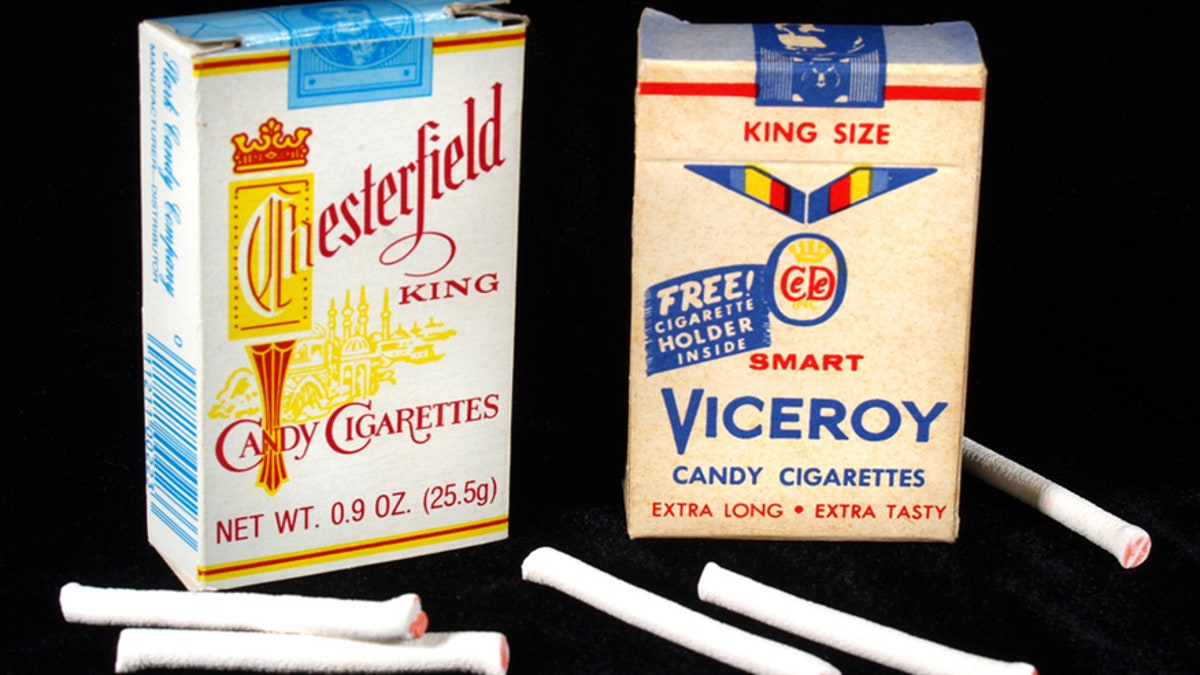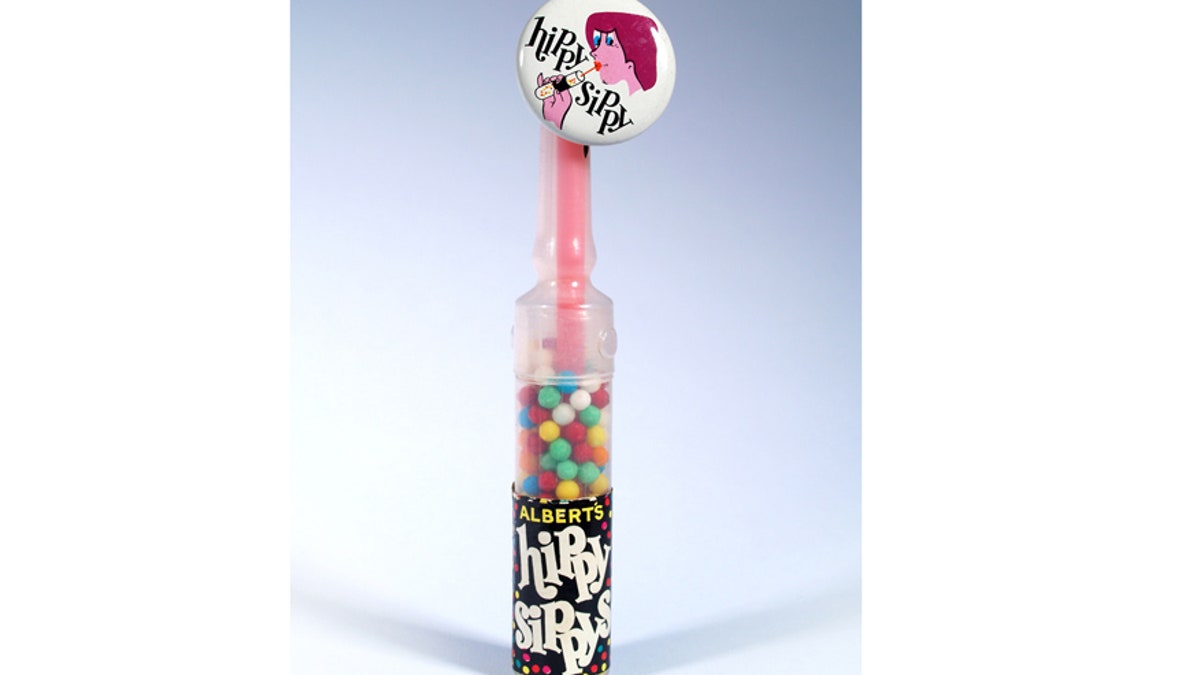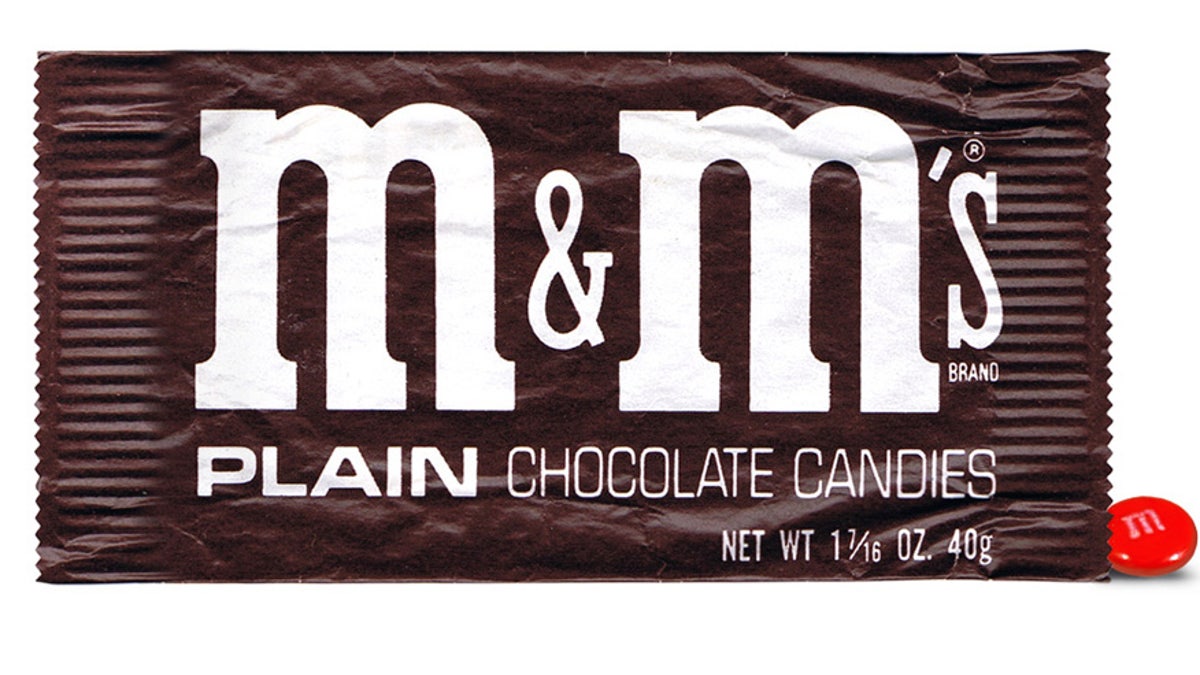Candy is dandy, but many of your favorite sweets have notorious – and quite scandalous – histories.
Darlene Lacey, head of the Candy Wrapper Museum and author of Classic Candy, dishes on some of the most infamous.
1. Pop Rocks

OLYMPUS DIGITAL CAMERA (Candy Wrapper Museum)
In 1975, this carbonated candy’s popularity skyrocketed because of its ability to seemingly explode in your mouth. Due to its short shelf life which resulting in it losing its pop, the candy’s distributor General Mills yanked it from store shelves in 1983, Lacey said.
However, problems for General Foods were far from over.
“A lot of people remember the idea that Pop Rocks mixed with soda would explode in your stomach,” Lacey said.
This rumor ran rampant when a report surfaced that child actor John Gilchrist, who played Little Mikey in Life Cereal commercials, died after the candy exploded in his stomach.
General Foods vehemently denied the rumor, but the negative press coupled with the distribution issues forced the company to discontinue the candy in 1983, she said.
Kraft Foods later purchased Pop Rocks.
2. Baby Ruth

(Candy Wrapper Museum)
Although this chocolate nougat candy’s maker, Curtiss, claimed it named its candy after President Grover Cleveland’s daughter, Ruth, most associated the chocolate bar with baseball player, Babe Ruth.
According to Lacey, many believe Curtiss pulled off “ambush marketing,” when a company capitalizes on a person’s fame without paying for it.
Cleveland’s daughter had died in 1904 – 17 years before the candy’s creation – so Curtiss’ explanation didn’t make much sense.
“They will just defend it to the end,” Lacey said. “The idea you would name a candy bar after a dead baby just isn’t probable. I think it’s a pretty weak defense.”
Lacey said Curtiss was a “flamboyant” company that was always doing larger-than-life promotional stunts.
“I think they just went ahead, took the name and ran with it,” she said.
3. Candy cigarettes

OLYMPUS DIGITAL CAMERA (Candy Wrapper Museum)
“In the 1950s and 1960s, candy cigarettes were everywhere, and they looked very realistic,” Lacey said. “The packages looked identical to cigarette brand packaging.”
Lacey said even before the 1964 surgeon general’s warning that “cigarette smoking may be hazardous to your health,” the anti-smoking movement had started to kick in and candy cigarettes started to lose popularity.
“Now they’re typically called candy sticks, and the boxes aren’t realistic,” she said. “It’s the only way anyone will acceptably sell them.”
4. Hippy Sippy

OLYMPUS DIGITAL CAMERA (Candy Wrapper Museum)
“This candy came with a plastic syringe, a hippie-looking girl on the tin and had ‘I’ll try anything’ as its slogan,” Lacey said of the chocolate ball candy imported from Japan in 1968.
As soon as it hit the shelves, there was an outcry from parents who claimed the candy promoted drug use.
“They were striking in the streets,” Lacey said.
Although the creator insisted it was just a novelty candy, it was pulled from the shelves in just a couple of months.
5. Red M&Ms

(Candy Wrapper Museum)
In 1976, M&M/Mars discontinued red M&Ms due to a rumor that the color was made from Red Dye #2. Mars claimed it didn’t use the dye, but it got rid of the color to eliminate fear.
“The company maintains they never used [the dye], but everyone thought they probably did,” Lacey said. “They wanted to appease the public, and it wasn’t worth trying to defend it. It was a little ambiguous.”
6. Bubble Yum

(Candy Wrapper Museum)
It was different from other gum because it had a slippery-yet-soft feel to it when you chewed. Lacey said it didn’t take long before a
“schoolyard rumor” spread that Bubble Yum’s softness came from spider eggs.
“It was a different time. People were just excitable,” she said.
There were even rumors that a girl came to school with a spider web on her face. The sales of the candy, which was released in 1976, dropped drastically.
“It did survive the bad reputation,” Lacey said, adding that Life Savers Inc. launched an ad campaign and Bubble Yum quickly regained its popularity.
7. Ayds diet candy

(Candy Wrapper Museum)
“This was doomed to fail,” Lacey said of the chewy, caramel-like candy that was supposed to make you lose weight. “It was just a candy laced with Benzocaine, a numbing agent for the taste buds.”
It would presumably reduce someone’s interest in food, so they would eat less, she said.
The candy was released in 1937, but it didn’t really take off until the early 1960s.
“It was popular until the 1970s, and then the health food movement took more of a step forward,” Lacey said. “People were looking to diet through more natural methods. But Ayds were kind of on their way out anyway.”
The final nail in the coffin for the candy was the disease AIDS, which sounded too similar for customers to stomach. By 1988, Dep Corporation, the company that made Ayds, announced it was changing its name to Diet Ayds, but the candy was already doomed.
